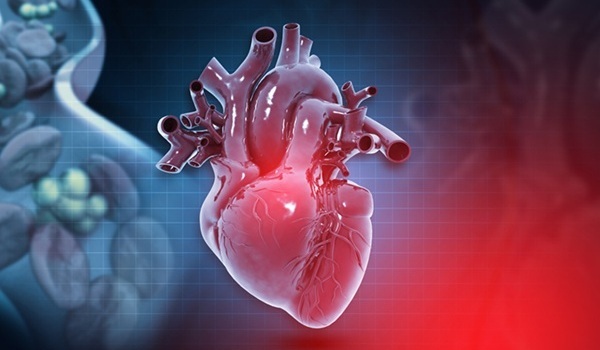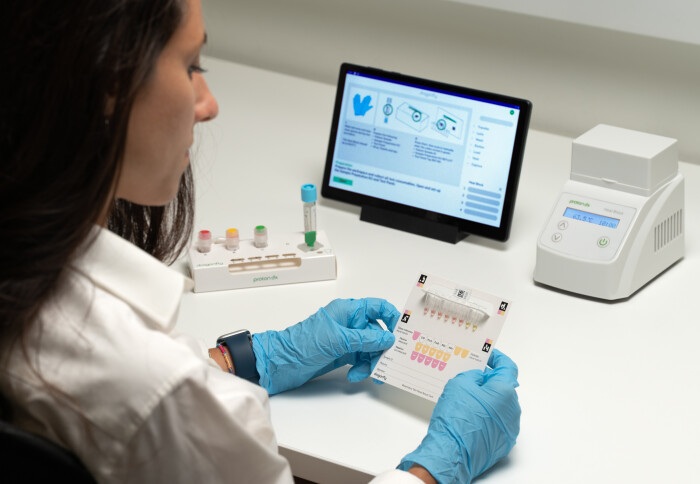Urine-Based Liquid Biopsy Test Detects Urothelial Carcinoma
|
By LabMedica International staff writers Posted on 22 Oct 2020 |
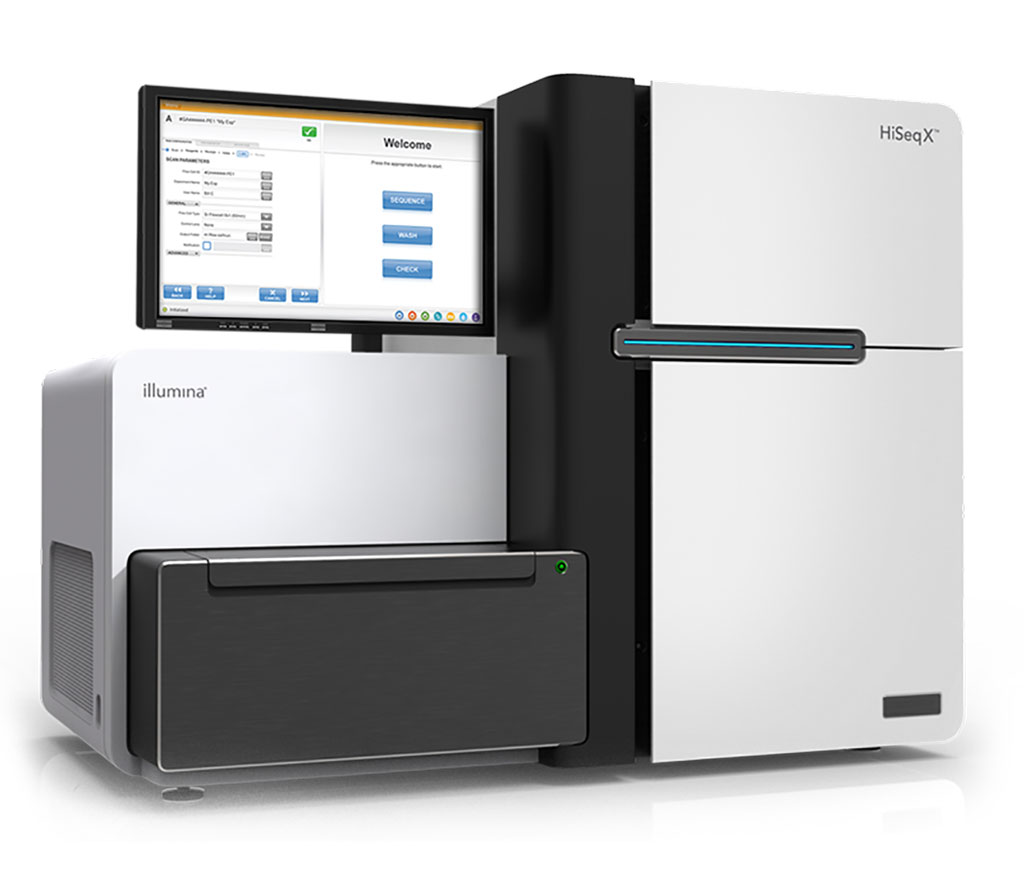
Image: The HiSeq XTen human whole- genome sequencing system (Photo courtesy of Illumina).
Urine cytology, which is widely used to screen for bladder cancer, has high specificity but lacks sensitivity, especially for low-grade cancers. Cystoscopy, while more accurate than cytology, is an invasive procedure with added costs and potential complications for the patient.
An inexpensive, non-invasive test for the detection and monitoring of bladder cancer is an unmet clinical need. The DNA isolated from urine exfoliated cells, a complex cell mixture that potentially includes tumor cells shed from the lining of the bladder, can provide clues to the presence of bladder cancer.
Urologists at the Changhai Hospital (Shanghai, China) and their colleagues used samples from patients enrolled in an observational clinical trial in Shanghai that is evaluating the a newly developed assay. A total of 190 patients (126 with urothelial carcinoma, 64 without cancer) participated in the discovery phase; no significant copy number variants (CNV) burden was detected in those without cancer. The scientists then developed a diagnostic model which incorporated all autosomal chromosomal changes in urine exfoliated cells.
The assay begins with a urine sample and following urine sedimentation and DNA extraction, the samples were analyzed using low-coverage whole-genome sequencing (LC-WGS). Urine-exfoliated cell DNA was analyzed by Illumina HiSeq XTen (Illumina, San Diego, USA) followed by genotyping with a customized bioinformatics workflow named Urine Exfoliated Cells Copy Number Aberration Detector (UroCAD). Because the assay relies on the detection of overall CNV burden, and not on the identification of specific genetic alterations, this cost-effective sequencing method was an ideal technique for sample analysis.
The UroCAD assay was evaluated in a validation cohort comprising 95 patients (56 with urothelial carcinoma, 39 without cancer). When compared with urine cytology, the investigators found that UroCAD had significantly higher sensitivity (80.4% versus 33.9%) and comparable specificity (94.9% versus 100%) for the detection of urothelial carcinoma. Further, in the seven patients whose low-grade tumors were confined to the epithelial layer of the bladder (pTa tumors), UroCAD had a sensitivity of 71.4%, while urine cytology had a sensitivity of 0%.
The sensitivity of UroCAD corresponded with tumor grade, as it could detect low-grade and high-grade urothelial carcinoma with a sensitivity of 60% and 86.6%, respectively. Further, the sensitivity of the test correlated with tumor size; the sensitivity of detection for tumors of 1 cm or less, tumors between 1 and 3 cm, and tumors greater than 3 cm was 66.7%, 72%, and 95.5%, respectively.
Jia-Tao Ji, MD, PhD, a Urologist and a senior author of the study, said, “"For patients with hematuria or who have suspected urothelial carcinoma, UroCAD is a promising way to replace cytology and to reduce repeated cystoscopy examinations.”
The authors concluded that UroCAD could be a robust urothelial carcinoma diagnostic method with improved sensitivity and similar specificity as compared with cytology tests. It may be used as a noninvasive approach for diagnosis and recurrence surveillance in urothelial carcinoma prior to the use of cystoscopy, which would largely reduce the burden on patients. The study was published on October 9, 2020 in the journal Clinical Cancer Research.
An inexpensive, non-invasive test for the detection and monitoring of bladder cancer is an unmet clinical need. The DNA isolated from urine exfoliated cells, a complex cell mixture that potentially includes tumor cells shed from the lining of the bladder, can provide clues to the presence of bladder cancer.
Urologists at the Changhai Hospital (Shanghai, China) and their colleagues used samples from patients enrolled in an observational clinical trial in Shanghai that is evaluating the a newly developed assay. A total of 190 patients (126 with urothelial carcinoma, 64 without cancer) participated in the discovery phase; no significant copy number variants (CNV) burden was detected in those without cancer. The scientists then developed a diagnostic model which incorporated all autosomal chromosomal changes in urine exfoliated cells.
The assay begins with a urine sample and following urine sedimentation and DNA extraction, the samples were analyzed using low-coverage whole-genome sequencing (LC-WGS). Urine-exfoliated cell DNA was analyzed by Illumina HiSeq XTen (Illumina, San Diego, USA) followed by genotyping with a customized bioinformatics workflow named Urine Exfoliated Cells Copy Number Aberration Detector (UroCAD). Because the assay relies on the detection of overall CNV burden, and not on the identification of specific genetic alterations, this cost-effective sequencing method was an ideal technique for sample analysis.
The UroCAD assay was evaluated in a validation cohort comprising 95 patients (56 with urothelial carcinoma, 39 without cancer). When compared with urine cytology, the investigators found that UroCAD had significantly higher sensitivity (80.4% versus 33.9%) and comparable specificity (94.9% versus 100%) for the detection of urothelial carcinoma. Further, in the seven patients whose low-grade tumors were confined to the epithelial layer of the bladder (pTa tumors), UroCAD had a sensitivity of 71.4%, while urine cytology had a sensitivity of 0%.
The sensitivity of UroCAD corresponded with tumor grade, as it could detect low-grade and high-grade urothelial carcinoma with a sensitivity of 60% and 86.6%, respectively. Further, the sensitivity of the test correlated with tumor size; the sensitivity of detection for tumors of 1 cm or less, tumors between 1 and 3 cm, and tumors greater than 3 cm was 66.7%, 72%, and 95.5%, respectively.
Jia-Tao Ji, MD, PhD, a Urologist and a senior author of the study, said, “"For patients with hematuria or who have suspected urothelial carcinoma, UroCAD is a promising way to replace cytology and to reduce repeated cystoscopy examinations.”
The authors concluded that UroCAD could be a robust urothelial carcinoma diagnostic method with improved sensitivity and similar specificity as compared with cytology tests. It may be used as a noninvasive approach for diagnosis and recurrence surveillance in urothelial carcinoma prior to the use of cystoscopy, which would largely reduce the burden on patients. The study was published on October 9, 2020 in the journal Clinical Cancer Research.
Latest Molecular Diagnostics News
- Multi-Cancer Early Detection Blood Test Increases Cancer Detection
- Portable Label-Free Device Tracks Alzheimer's Disease in Real Time
- Liquid Biopsy Test Enables Early Detection of ICI-Related Myocarditis
- Rapid POC Diagnostic Test Detects Asymptomatic Malaria Cases
- Improved DNA Sequencing Tool Uncovers Hidden Mutations Driving Cancer
- Newborn Genomic Screening Enables More Lifesaving Diagnoses
- Blood Protein Tests Could Identify Distinct Molecular Fingerprints of Multiple Diseases
- Interstitial Lung Disease Test Could Identify Patients Before Symptoms Appear
- Genomic-First Approach Identifies Rare Genetic Disorders Earlier
- Simple Blood Test Could Reveal Kidney Disease Earlier
- Revolutionary Blood Test Accurately Diagnoses Chronic Fatigue Syndrome
- Stool-Based DNA Testing Leads to Timely Colonoscopy
- Groundbreaking Tool Improves Genetic Testing Accuracy
- Biomarker Blood Test Could Predict Development of Long COVID
- Polygenic Risk Score Blood Test Predicts Future Breast Cancer
- AI-Powered Blood Tests Enable Early Detection of Alzheimer’s Disease
Channels
Clinical Chemistry
view channel
VOCs Show Promise for Early Multi-Cancer Detection
Early cancer detection is critical to improving survival rates, but most current screening methods focus on individual cancer types and often involve invasive procedures. This makes it difficult to identify... Read more
Portable Raman Spectroscopy Offers Cost-Effective Kidney Disease Diagnosis at POC
Kidney disease is typically diagnosed through blood or urine tests, often when patients present with symptoms such as blood in urine, shortness of breath, or weight loss. While these tests are common,... Read moreMolecular Diagnostics
view channel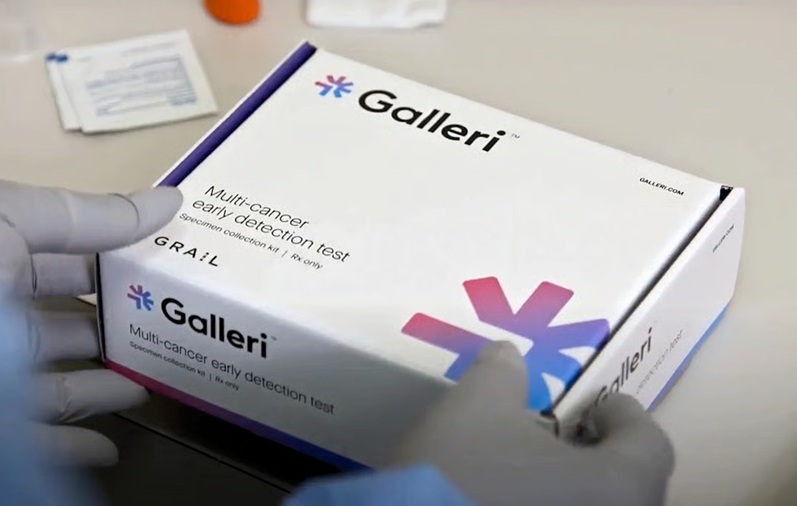
Multi-Cancer Early Detection Blood Test Increases Cancer Detection
Cancer is the second leading cause of death worldwide as most deadly cancers are found too late. Approximately 70% of cancer deaths come from cancers that do not have standard-of-care screening and are... Read more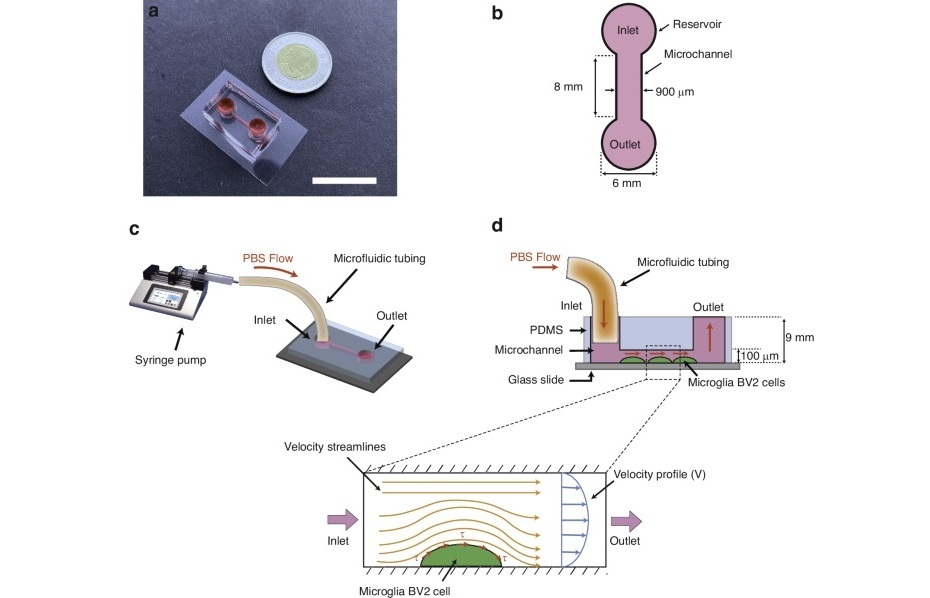
Portable Label-Free Device Tracks Alzheimer's Disease in Real Time
Alzheimer’s disease is marked by the accumulation of toxic protein fragments in the brain that damage nerve cells and impair memory. Detecting and tracking these early changes remains a major challenge,... Read moreHematology
view channel
Viscoelastic Testing Could Improve Treatment of Maternal Hemorrhage
Postpartum hemorrhage, severe bleeding after childbirth, remains one of the leading causes of maternal mortality worldwide, yet many of these deaths are preventable. Standard care can be hindered by delays... Read more
Pioneering Model Measures Radiation Exposure in Blood for Precise Cancer Treatments
Scientists have long focused on protecting organs near tumors during radiotherapy, but blood — a vital, circulating tissue — has largely been excluded from dose calculations. Each blood cell passing through... Read more
Platelets Could Improve Early and Minimally Invasive Detection of Cancer
Platelets are widely recognized for their role in blood clotting and scab formation, but they also play a crucial role in immune defense by detecting pathogens and recruiting immune cells.... Read more
Portable and Disposable Device Obtains Platelet-Rich Plasma Without Complex Equipment
Platelet-rich plasma (PRP) plays a crucial role in regenerative medicine due to its ability to accelerate healing and repair tissue. However, obtaining PRP traditionally requires expensive centrifugation... Read moreImmunology
view channel
Molecular Microscope Diagnostic System Assesses Lung Transplant Rejection
Lung transplant recipients face a significant risk of rejection and often require routine biopsies to monitor graft health, yet assessing the same biopsy sample can be highly inconsistent among pathologists.... Read more
Blood Test Tracks Treatment Resistance in High-Grade Serous Ovarian Cancer
High-grade serous ovarian cancer (HGSOC) is often diagnosed at an advanced stage because it spreads microscopically throughout the abdomen, and although initial surgery and chemotherapy can work, most... Read more
Luminescent Probe Measures Immune Cell Activity in Real Time
The human immune system plays a vital role in defending against disease, but its activity must be precisely monitored to ensure effective treatment in cancer therapy, autoimmune disorders, and organ transplants.... Read more
Blood-Based Immune Cell Signatures Could Guide Treatment Decisions for Critically Ill Patients
When a patient enters the emergency department in critical condition, clinicians must rapidly decide whether the patient has an infection, whether it is bacterial or viral, and whether immediate treatment... Read moreMicrobiology
view channel
Fast Noninvasive Bedside Test Uses Sugar Fingerprint to Detect Fungal Infections
Candida bloodstream infections are a growing global health threat, causing an estimated 6 million cases and 3.8 million deaths annually. Hospitals are particularly vulnerable, as weakened patients after... Read more
Rapid Sepsis Diagnostic Device to Enable Personalized Critical Care for ICU Patients
Sepsis is a life-threatening condition that occurs when the body’s response to infection spirals out of control, damaging organs and leading to critical illness. Patients often arrive at intensive care... Read moreTechnology
view channel
Acoustofluidic Device to Transform Point-Of-Care sEV-Based Diagnostics
Rapid and sensitive detection of small extracellular vesicles (sEVs)—key biomarkers in cancer and organ health monitoring—remains challenging due to the need for multiple preprocessing steps and bulky... Read more
AI Algorithm Assesses Progressive Decline in Kidney Function
Chronic kidney disease (CKD) affects more than 700 million people worldwide and remains a major global health challenge. The condition often progresses silently, and many patients remain undiagnosed until... Read more
Taste-Based Influenza Test Could Replace Nasal Swabs with Chewing Gum
Influenza is one of the most dangerous infectious diseases worldwide, claiming around half a million lives each year. What makes it particularly insidious is that flu viruses are contagious even before... Read more
3D Micro-Printed Sensors to Advance On-Chip Biosensing for Early Disease Detection
Early-stage disease diagnosis depends on the ability to detect biomarkers with exceptional sensitivity and precision. However, traditional biosensing technologies struggle with achieving this at the micro-scale,... Read moreIndustry
view channel
Bio-Rad and Biodesix Partner to Develop Droplet Digital PCR High Complexity Assays
Bio-Rad Laboratories (Hercules, CA, USA) and Biodesix (Louisville, CO, USA) have expanded their partnership agreement under which Biodesix will conduct the development, clinical validation, and regulatory... Read moreHologic to be Acquired by Blackstone and TPG
Hologic (Marlborough, MA, USA) has entered into a definitive agreement to be acquired by funds managed by Blackstone (New York, NY, USA) and TPG (San Francisco, CA, USA) in a transaction valued at up to... Read more
Bio-Techne and Oxford Nanopore to Accelerate Development of Genetics Portfolio
Bio-Techne Corporation (Minneapolis, MN, USA) has expanded its agreement with Oxford Nanopore Technologies (Oxford, UK) to broaden Bio-Techne's ability to develop a portfolio of genetic products on Oxford... Read more













